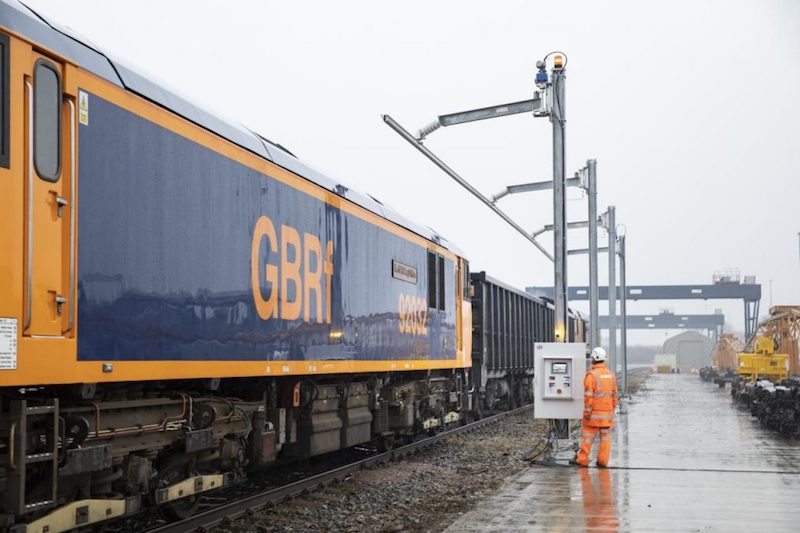
A prototype electrified rail freight terminal in Dunbar is one of 30 projects to have received funding from Innovate UK and the Department for Transport as part of its First of a Kind rail innovation competition series.
Engineering firm Furrer+Frey GB has used the funding to develop an overhead conductor system specifically designed for UK freight terminals, which currently rely on diesel shunters.Tarmac are hosting the development and trialling of the concept at their cement plant in Dunbar on the East Coast Mainline .
Despite many rail freight terminals being next to electrified railways, the overhead cables must stop short of the terminals, so the trains can be loaded and unloaded safely.
All freight terminals in the UK today rely on diesel shunters to move trains into position, which comes with added time, fuel, noise and pollution. The prototype involves moveable overhead cables that will allow freight trains to move into position then retract to enable safe loading and unloading, called the Moveable Overhead Conductor-rail System.
By making rail freight quicker and greener, it could help shift more freight from road to rail with significant benefits for UK carbon emissions. Moving goods by HGV produces nine times the emissions of the equivalent amount moved by rail (per tonne per kilometre).
Diesel is also a major source of air pollution, particularly in towns and cities, and a shift away from the fuel will help efforts to improve air quality, particularly for urban rail freight terminals.
The Decarbonisation and Electrification of Freight Terminals (DEFT) project is being led by Furrer + Frey with support from Tarmac and Rail Forum Midlands. The project has the backing of major rail freight companies including Tarmac, VTG, DB Cargo, Freightliner, GB Railfreight and ERMEWA.
Noel Dolphin Head of UK Projects, Furrer+Frey, said: “Electric rail freight can become a quick, green and pollution-free alternative to lorries on our roads. The system is tried-and-tested at passenger train depots, but no working system has been developed to deal with the challenges of UK freight.
"We hope that DEFT will eliminate one of the last remaining barriers to full electrification, ensuring diesel can be completely squeezed out of freight operations, paving the way to net zero.”
Chris Swan, Head of Rail, Tarmac said: “As highlighted in a number of recent strategic papers on the future of a decarbonised freight railway, electric traction is an important option for it to be a success.
“However, finding a practical yet cost effective solution for the many UK terminals must be researched further if we are to take advantage of it.”
Robert Hodgson, Engagement Manager, Rail Forum Midlands, said: “The DEFT project was an excellent submission to our challenge on decarbonisation for SMEs.
“This success demonstrates the real value of our SME challenges and together with the collaborations being created as a result, and we look forward to more SMEs getting involved in future challenge opportunities.”
Furrer+Frey GB has installed similar retractable systems at passenger train depots, for instance at the Temple Mills Eurostar depot but no such system has been successfully developed for the distinct needs of rail freight, which include the overhead loading and unloading of goods and movement of the loading machinery.